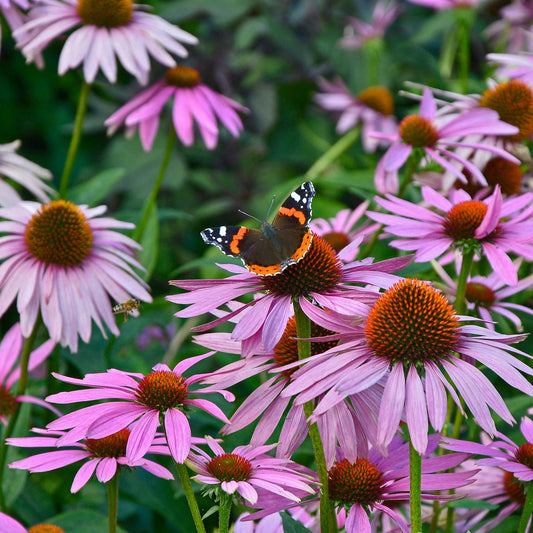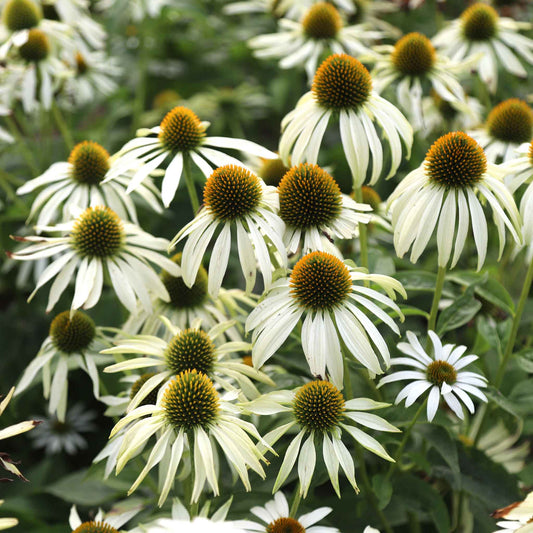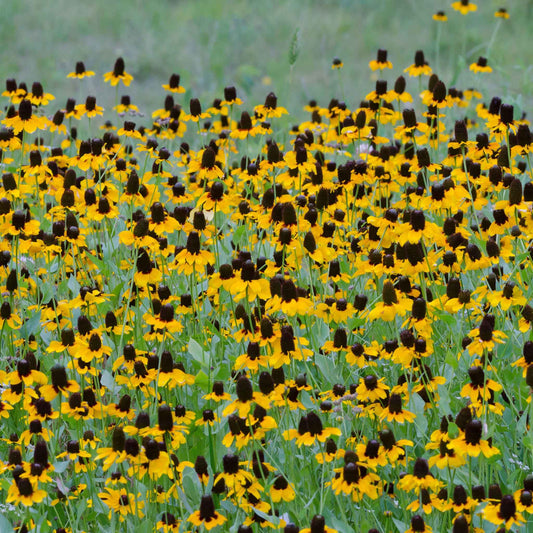-
main-collection-product-grid

Purple Coneflower Seeds (Echinacea)
This native perennial is a treasured herbal remedyPurple Coneflower Seeds (Echinacea)
This native perennial is a treasured herbal remedyRegular price As Low As $4.99Regular priceUnit price per -
main-collection-product-grid

Coneflower Seeds - White Swan
RHS Award of Garden Merit winner with crisp white blooms floating atop attractive bushy plantsConeflower Seeds - White Swan
RHS Award of Garden Merit winner with crisp white blooms floating atop attractive bushy plantsRegular price $4.99Regular priceUnit price per -
main-collection-product-grid

Clasping Coneflower Seeds
This native wildflower is a close relative of black-eyed susansClasping Coneflower Seeds
This native wildflower is a close relative of black-eyed susansRegular price As Low As $4.99Regular priceUnit price per
Planting heirloom echinacea seeds in your yard
- Native North American flowers
- Excellent for pollinators
- Also called coneflower
- Prefers full sun exposure
Echinacea purpurea is a sunflower-like plant that is native to North America and can be found in the wild over much of the eastern, southeastern, and midwestern United States, as well as several Canadian provinces. Heirloom echinacea, sometimes known as purple coneflower, is a popular addition to many gardeners' yards, but it began as a wildflower in prairies and open woodland areas. On tall stalks that can grow up to five feet in height, Echinacea produces stunning, long-lasting purple and pink flowers with hairy disked centers. The leaves are typically fuzzy and rough-textured, but they can be hairless as well. As the leaves go up the stem, they will often diminish in size. They're easy to spot from afar, and once you know what they look like, they're easy to find.
In addition to being lovely, Echinacea flowers are sometimes used as a medicinal herb. Echinacea's medicinal properties date back to the 18th century, and it is widely utilized as folk medicine by North American indigenous peoples. Echinacea tea is still a popular beverage that is supposed to help improve the immune system and prevent colds. However, there is no credible medical data to support this claim. Phenols are found in the echinacea plant, as well as many other species. These aid in the plant's disease defense and may also have antioxidant properties.
After the frost, late fall is the best time to grow echinacea seeds. Alternatively, around six to eight weeks before your final frost date, you can start the seeds indoors (after a period of eight to twelve weeks of cold stratification). The optimal conditions for growing Echinacea are full light and well-drained soil. Flowering may begin to decline if your soil is overly rich. In places where normal rainfall occurs, manual watering will not be required. Cut the plant down by 1/3rd of its height once the echinacea blossoms have faded. This will assist in the plant's re-energization.
For more information about planting, growing, and caring for heirloom echinacea seeds, see the Echinacea Seeds Planting Guide.


